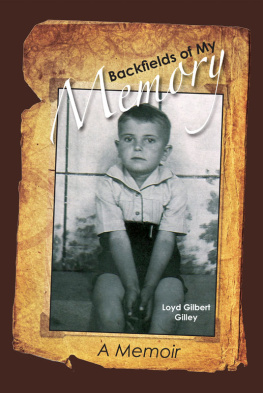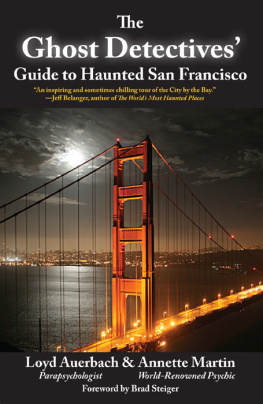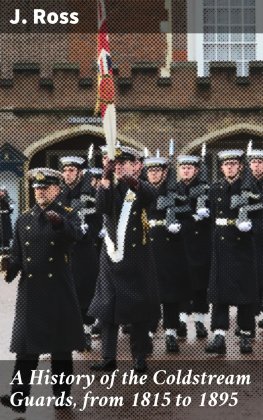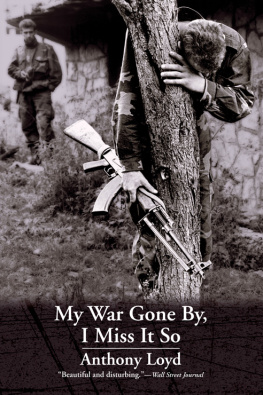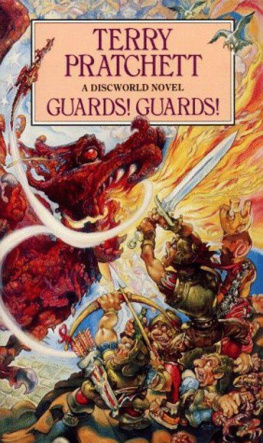CONTENTS
To the memory of Shylock:
the finest black horse of them all
Acknowledgements
I would like to thank all of the many past members and the handful of serving members of The Life Guards for providing me with the many anecdotes and photographs which go to make up this book. They are too numerous to mention here, but all can be found in the text.
I must express my gratitude for the faith placed in me by the past and present serving officers who agreed to sponsor this book, namely Captain the Duke of Marlborough, Sir Philip Naylor-Leyland, Bart, Captain Hon Robin Cayzer, Dr Hon Gilbert Greenall, Major Timothy Gooch, Lieutenant Colonels James Ellery and Dennis Meakin and Major Peter Hunter.
Past and serving officers read my draft chapters and their resulting comments put me right on many occasions. For this my particular thanks must go to Major General Sir Simon Cooper, Brigadier Arthur Gooch, Colonel WH Gerard Leigh, Lieutenant Colonels James Ellery and Dennis Meakin, Majors Toni Chiesman and Timothy Gooch and Captains Michael Naylor-Leyland, David Palmer and Derek Stratford.
Major Paddy Kersting, curator of the Household Cavalry Museum, and his assistant Mr Ted Woodbridge, both former Blues, allowed me access to their archives, and I had great help from all at Headquarters, Household Cavalry. The Guards Magazine (formerly the Household Brigade Magazine), of which Lieutenant Colonel Sir Julian Paget, Bart, has been editor for many years, has been a most useful source for reference, as has been the regiments annual Acorn Magazine.
I would like to thank Tom Hartman for his painstaking editing of my manuscript; also Jonathan Grosvenor of Ivanhoe Publishing for the use of his Apple Macintosh computer without which the preparation of this book would not have been possible. Finally my heart felt thanks to my wife Lilo for her hours of patient proof-reading.
Foreword
by Major General Lord Michael Fitzalan Howard GCVO, CB, CBE, MC,
Colonel, The Life Guards, from 1979 onwards.
No account of the activities and achievements of The Life Guards has been written since the two volumes which recorded the history of the First and Second Household Cavalry Regiments in the Second World War. Much has happened to the Regiment since they reformed as The Life Guards in August, 1945, and it is important that a volume should be produced as a chronicle of the many and varied places where Life Guards have served, from Goslar to Kuwait.
Major William Loyd was given the monumental task of writing the story of the Regiment as they moved in and out of Cold War tasks and training in Germany and other parts of Western Europe and Canada. Included are world-wide operational duties in Egypt, the Arab Emirates, Oman and Aden, in Borneo, Malaya, Hong Kong, Cyprus and Belize, in Northern Ireland, and most recently back in the desert for the Gulf War.
Despite forty-six years of peace, the Regiment has been fully engaged in minor wars and counter-terrorism; in peace-keeping with the United Nations; in aid to the Civil Power in the firemens and ambulancemens disputes; in anti-terrorist duties such as those at Heathrow and Gatwick airports; and, of course until recently, in countering the threat posed by the forces of the Warsaw Pact.
The Life Guards have been organized as an armoured car regiment, an airportable regiment, an armoured reconnaissance regiment, an armoured regiment and have met, year in year out, their commitment to Public Duties with the Household Cavalry Mounted Regiment.
It is using these bare facts that William Loyd has so skilfully described the history of The Life Guards and those who have served in the Regiment since 1945. It is, above all, a story about people: the fun and excitement, the good times and the bad through which officers and soldiers have carried out their duties with renowned skill, determination and humour.
The Regiment have a reputation second to none in their service to the Crown and to the Nation. The last forty-six years have continued to enhance their standing won in over 300 years as the senior regiment of the British Army.
Today, as The Life Guards stand at the beginning of a new venture in partnership with The Blues and Royals, it is worth repeating the words of Colonel Humphrey Wyndham at the close of his history of the First Household Cavalry Regiment: The spirit and tradition of the two regiments has become merged into those of two armoured car regiments. Both officers and men still retained the same characteristics that had distinguished their predecessors of The Life Guards and Blues, but for six years their whole scheme of things had centred around 1 and 2 HCR.
In the years to come our scheme of things, with those of The Blues and Royals, will centre around the armoured reconnaissance and mounted regiments. But The Life Guards will retain their spirit and the traditions that have characterized the Regiment since 1660; this is epitomized by the preservation of uniforms and customs within The Life Guards sabre and mounted squadrons of the new Household Cavalry organization.
I commend this new history as an excellent addition to the uniquely distinguished record of The Life Guards.
Preface
This is a book about several thousand British men who, at some time between the end of the Second World War in Europe in May, 1945, and the union of the Regiment with The Blues and Royals in October, 1992 to form the Household Cavalry Regiment, wore the cap-badge of The Life Guards. Some conscripts may have done so reluctantly, but I think that most of the gentlemen of The Life Guards, as they were so addressed, wore the badge with pride.
The Life Guards, formed in 1660 and the senior regiment in the British Army, did not question why they were sent to various strange places and called upon at times to separate one set of indigenous inhabitants who were good from another set who were bad. It was their practice to do what was required, and do it well, then have a bit of a whinge about it afterwards. This applies to all ranks: a former Commanding Officer even admitted to me that he was not clear as to why his command had been in a certain place at a certain time.
Some Life Guards, such as Major Generals Sir Desmond Langley and Sir Simon Cooper, made the army their career-, others went on to other walks of life, their service done. Some made their names in politics, in industry, or in the sporting world: a few others, inevitably, deviated from the legal or moral codes, but all would agree that once a Life Guard, always a Life Guard.
During the forty-seven years under review The Life Guards, in common with the rest of the British Armed Forces, spent a great deal of time in training for war against possible aggression by the now defunct Warsaw Pact block of the Soviet Union and the countries of Eastern Europe. The fact that the Warsaw Pact was the first to lose its resolve and to disband must be due, at any rate in part, to the will to maintain a high standard of training for war within the NATO Armed Forces. This high standard was to show its worth both in the British Falklands campaign of 1982, in which elements of The Blues and Royals took part, and in the 1991 War in the Gulf in which the entire regiment of Life Guards were deployed as part of the coalition forces arrayed against Iraq.



